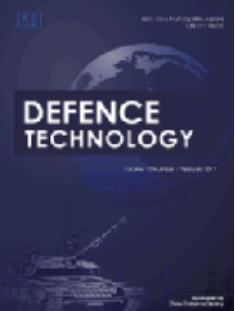Reverse design of solid propellant grain based on deep learning: Imaging internal ballistic data
IF 5.9
Q1 ENGINEERING, MULTIDISCIPLINARY
引用次数: 0
Abstract
The reverse design of solid rocket motor (SRM) propellant grain involves determining the grain geometry to closely match a predefined internal ballistic curve. While existing reverse design methods are feasible, they often face challenges such as lengthy computation times and limited accuracy. To achieve rapid and accurate matching between the targeted ballistic curve and complex grain shape, this paper proposes a novel reverse design method for SRM propellant grain based on time-series data imaging and convolutional neural network (CNN). First, a finocyl grain shape-internal ballistic curve dataset is created using parametric modeling techniques to comprehensively cover the design space. Next, the internal ballistic time-series data is encoded into three-channel images, establishing a potential relationship between the ballistic curves and their image representations. A CNN is then constructed and trained using these encoded images. Once trained, the model enables efficient inference of propellant grain dimensions from a target internal ballistic curve. This paper conducts comparative experiments across various neural network models, validating the effectiveness of the feature extraction method that transforms internal ballistic time-series data into images, as well as its generalization capability across different CNN architectures. Ignition tests were performed based on the predicted propellant grain. The results demonstrate that the relative error between the experimental internal ballistic curves and the target curves is less than 5%, confirming the validity and feasibility of the proposed reverse design methodology.
基于深度学习的固体推进剂颗粒反设计:内弹道数据成像
固体火箭发动机(SRM)推进剂药粒的反设计包括确定药粒的几何形状以与预定的内弹道曲线紧密匹配。虽然现有的反设计方法是可行的,但它们往往面临计算时间长、精度有限等挑战。为实现目标弹道曲线与复杂颗粒形状的快速准确匹配,提出了一种基于时间序列数据成像和卷积神经网络(CNN)的新型SRM推进剂颗粒反设计方法。首先,利用参数化建模技术建立了覆盖设计空间的finocyl颗粒形状-内弹道曲线数据集;接下来,内部弹道时间序列数据被编码成三通道图像,建立弹道曲线及其图像表示之间的潜在关系。然后使用这些编码图像构建和训练CNN。该模型经过训练后,能够根据目标内弹道曲线有效地推断出推进剂颗粒尺寸。本文通过不同神经网络模型的对比实验,验证了将弹道内时序数据转化为图像的特征提取方法的有效性,以及其在不同CNN架构下的泛化能力。根据预测的药粒进行了点火试验。结果表明,实验内弹道曲线与目标曲线的相对误差小于5%,验证了所提反设计方法的有效性和可行性。
本文章由计算机程序翻译,如有差异,请以英文原文为准。
求助全文
约1分钟内获得全文
求助全文
来源期刊

Defence Technology(防务技术)
Mechanical Engineering, Control and Systems Engineering, Industrial and Manufacturing Engineering
CiteScore
8.70
自引率
0.00%
发文量
728
审稿时长
25 days
期刊介绍:
Defence Technology, a peer reviewed journal, is published monthly and aims to become the best international academic exchange platform for the research related to defence technology. It publishes original research papers having direct bearing on defence, with a balanced coverage on analytical, experimental, numerical simulation and applied investigations. It covers various disciplines of science, technology and engineering.
 求助内容:
求助内容: 应助结果提醒方式:
应助结果提醒方式:


